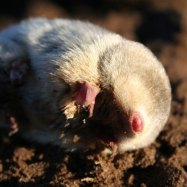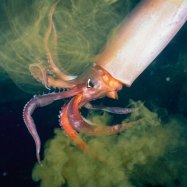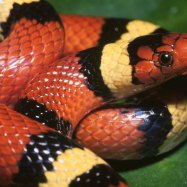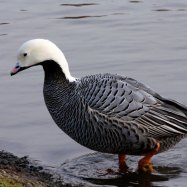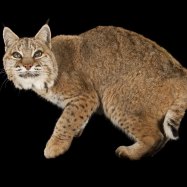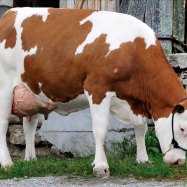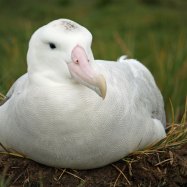
Flamingo
3.9 to 4.9 feet
The vibrant pink Flamingo is a sight to behold. Standing at 3.9 to 4.9 feet and with a long graceful neck and legs, it's no wonder these birds are considered one of the most elegant animals. Found in coastal areas like lagoons and estuaries, Flamingos are social birds that form large flocks. These tall and long-legged creatures belong to the Phoenicopteridae family and have a large wingspan, making them great fliers and swimmers. #Flamingo #Birds #CoastalAnimals
Animal Details Summary:
Common Name: Flamingo
Kingdom: Animalia
Habitat: Tropical and subtropical wetlands
The Dazzling Flamingo: Discovering the Graceful Bird of Tropical Wetlands
The pink-hued flamingo is a bird that has captured the attention and hearts of people around the world. This striking bird is known for its tall, slender body, long graceful neck, and stunning coloration. Found in tropical and subtropical wetlands, the flamingo is a unique and fascinating animal that is a symbol of beauty and grace. In this article, we will delve into the world of the flamingo and discover why it is truly a one-of-a-kind creature Flamingo.The Basics
Scientifically known as Phoenicopterus, the flamingo is a wading bird that belongs to the order Phoenicopteriformes. It is the only bird species in its order and is classified under the family Phoenicopteridae. This elegant creature can be found in different parts of the world, with its primary habitats being tropical and subtropical wetlands. Its feeding method is also unique as it is a filter feeder, meaning it consumes its food by filtering out small organisms from the water.The flamingo is a tall and slender bird, with a long neck and legs. Its wingspan can range from 3.9 to 4.9 feet, and it weighs between 4.4 to 8 Feist.8 pounds. One of the most distinctive features of the flamingo is its striking pink or reddish coloration with black-tipped wings. This stunning coloration is due to the algae and small organisms that the flamingo consumes, giving its feathers a vibrant pink hue. However, not all flamingos have the same coloration, as it can vary depending on their geographical location.
Distribution and Habitat
The flamingo can be found in many different countries, such as Africa, the Americas, Asia, and Europe. However, it is mainly a native species of warm and tropical regions. Some of the countries where flamingos can be found include Kenya, Tanzania, South Africa, Argentina, Chile, India, and Spain. They prefer to live in warm climates, which allows them to thrive in their natural habitat.The primary habitat of flamingos is tropical and subtropical wetlands, which includes coastal areas, lagoons, and estuaries. These wetlands provide a suitable environment for flamingos to breed, feed, and rest. They are also found in saltwater lakes, mangrove swamps, and brackish rivers. These wetlands are abundant in their primary food source – small organisms, such as algae, crustaceans, mollusks, and insects.
Why Are Flamingos Pink?
One of the most common questions people have about flamingos is why they have such a vibrant pink color. Most people assume it is because of their diet, and they are partially correct. The flamingo's diet plays a significant role in their coloration, as the algae and small organisms they consume contain carotenoids. These carotenoids are responsible for the red and orange hues in the flamingo's feathers.However, the flamingo's diet alone does not determine its color. The algae and small organisms that the flamingo consumes are only available in certain environments, which affects the availability of these carotenoids. This is why flamingos in different regions have varying shades of pink. For example, the Caribbean flamingos have a brighter and more vibrant pink color compared to the American flamingos, which have a paler pink hue. Interestingly, flamingos in captivity may have a different color due to artificial food sources lacking carotenoids.
The Graceful Life of a Flamingo
Flamingos are known for their graceful movements, making them a sight to behold. They are also highly sociable birds and often gather in large flocks that can consist of thousands of individuals. Within these flocks, there is a well-defined social hierarchy, with the most dominant individuals at the top. Flamingos also perform some synchronized movements within their flock, which researchers believe is a way to maintain their hierarchal relationships.These birds are monogamous, meaning they form a lifelong bond with their mates. They are also devoted parents, with both the male and female participating in building the nest, incubating the egg, and raising the chick. The flamingo's unique reproductive strategy also helps to protect their young from predators, as they nest in large colonies where predators have a difficult time attacking.
The Benefits of the Flamingo's Unique Body Shape
The flamingo's long, slender body, and elongated neck may be a striking feature, but it also serves a vital purpose. Their long legs allow them to wade in deep water, and their long necks enable them to reach for their food source deep in the water. Moreover, their large wingspan enables them to glide effortlessly over the water's surface, conserving energy while they fly.The flamingo's unique body shape also plays a significant role in thermoregulation. These birds can be found in both hot and cold climates, and their bodies are well-adapted to handle extreme temperatures. Their long legs help them to keep their body away from the hot ground during warmer weather, while their large wings act as insulation in colder weather.
Flamingos and Humans
Flamingos have been a part of human culture and history for centuries. In ancient Rome, flamingo tongue was considered a delicacy, and the bird was also a popular hunting target in Europe in the 19th and 20th centuries. However, due to their decline in numbers, flamingos are now protected by various laws, and hunting them is prohibited in most countries.Moreover, the flamingo's unique and striking appearance has made it an icon in fashion, art, and design. From fashionable clothing and accessories to home décor and even lawn ornaments, the flamingo has been embraced by the world as a symbol of beauty and style.
The Future of Flamingos
Despite the fascination and adoration for flamingos, these beautiful birds are facing numerous threats in their natural habitat. Habitat loss, pollution, and climate change are major factors affecting their populations. Additionally, their unique feeding behavior makes them highly sensitive to changes in their environment, which can have severe consequences on their ability to find food.Conservation efforts are ongoing, with numerous organizations working to protect and preserve the flamingo's habitat. This includes the creation of protected areas, such as national parks and wildlife reserves, and education and awareness programs to promote responsible tourism in areas where flamingos reside. The future of these graceful birds is in our hands, and it is crucial to take steps to ensure their survival for generations to come.
The Flamingo's Fascinating Adaptations
The flamingo is not just a beautiful and graceful creature, but it also possesses some fascinating adaptations that have allowed it to thrive in its unique habitat. One of these adaptations is the presence of salt glands in its bill, allowing it to remove excessive salt from its body. This is especially important for flamingos living in salty or brackish water.Moreover, their beaks have a unique way of filtering food from the water. The beak contains lamellae, which are small hair-like structures that trap the small organisms, allowing the flamingo to filter out its food from the water. Another intriguing adaptation is their ability to stand on one leg for extended periods, which conserves energy and may also play a role in their thermoregulation.
The Majestic Flamingo
In conclusion, the flamingo is a magnificent and remarkable bird that has captured the imagination and fascination of people around the world. Found in tropical and subtropical wetlands, their striking pink color, and graceful movements make them a sight to behold. However, it is not just their beauty that makes them unique but also their adaptations, feeding behavior, and role in their ecosystem. As we continue to learn more about these majestic birds, it is our responsibility to protect and preserve their natural habitats for future generations to enjoy. So, let us all admire the beauty and wonder of the flamingo and strive to ensure its survival in the wild.

Flamingo
Animal Details Flamingo - Scientific Name: Phoenicopterus
- Category: Animals F
- Scientific Name: Phoenicopterus
- Common Name: Flamingo
- Kingdom: Animalia
- Phylum: Chordata
- Class: Aves
- Order: Phoenicopteriformes
- Family: Phoenicopteridae
- Habitat: Tropical and subtropical wetlands
- Feeding Method: Filter feeders
- Geographical Distribution: Africa, Americas, Asia, Europe
- Country of Origin: Various countries
- Location: Coastal areas, lagoons, estuaries
- Animal Coloration: Pink or reddish color with black-tipped wings
- Body Shape: Tall with long neck and legs, large wingspan
- Length: 3.9 to 4.9 feet

Flamingo
- Adult Size: 4 to 5 feet
- Average Lifespan: 20 to 30 years
- Reproduction: Sexual
- Reproductive Behavior: Form large breeding colonies
- Sound or Call: Loud honking or braying sound
- Migration Pattern: Some species migrate long distances
- Social Groups: Colonial
- Behavior: Social and gregarious
- Threats: Habitat loss, pollution, hunting
- Conservation Status: Varies by species
- Impact on Ecosystem: Important in nutrient cycling
- Human Use: Tourism, hunting, feathers used in fashion industry
- Distinctive Features: Long, thin neck and legs, curved beak
- Interesting Facts: Flamingos can sleep on one leg
- Predator: Large birds of prey, mammals
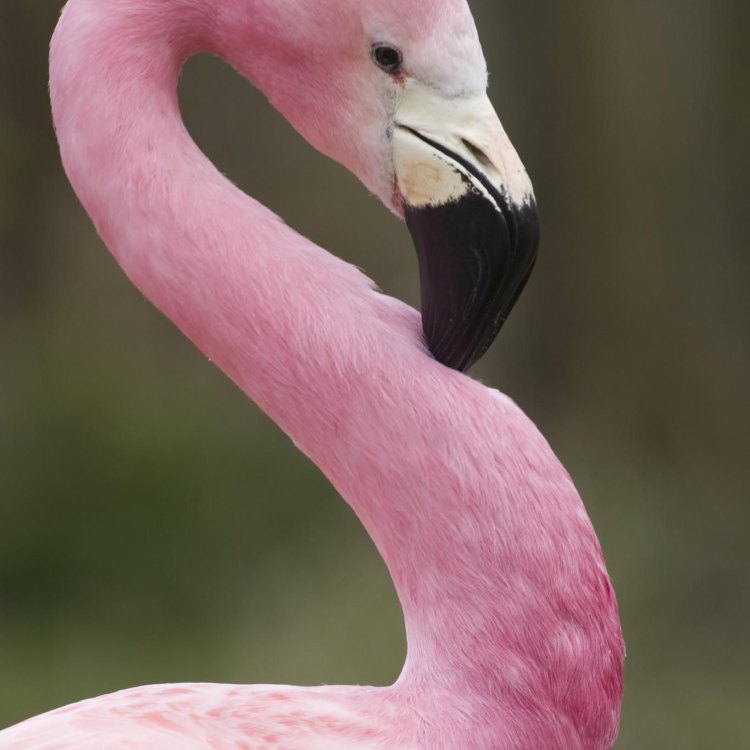
Phoenicopterus
The Magnificent Flamingo: An Icon of Elegance and Resilience
The flamingo, with its vibrant pink feathers and graceful stature, is a bird that has captivated people's imaginations for centuries. These striking creatures are fascinating not only for their unique appearance but also for their impressive resilience and important role in their ecosystems. In this article, we will explore some of the most distinctive features of the magnificent flamingo, from their size and lifespan to their behavior and impact on the world around them.Adult Size and Lifespan
The flamingo is a tall and elegant bird, ranging in size from 4 to 5 feet tall PeaceOfAnimals.Com. That's about the height of an average adult human! But unlike humans, flamingos have a slender and agile build, with long, thin legs and a curved beak. Their feathers come in several shades of pink, from pale pastels to vibrant magenta, giving them a regal and majestic appearance.
On average, flamingos have a lifespan of 20 to 30 years in the wild. However, some species have been known to live up to 50 years in captivity. This impressive longevity is due to the flamingo's adaptability and resilience in the ever-changing environments they inhabit.
Reproduction and Reproductive Behavior
Like most birds, flamingos reproduce sexually. During the breeding season, which typically occurs in the spring, flamingos form large breeding colonies of thousands of individuals. They gather in shallow waters, where they build their nests out of mud and vegetation.
Interestingly, flamingos have a unique way of flirting and selecting their mates Fainting Goat. Males and females perform an elaborate courtship dance, where they strut and sway together while vocalizing and shaking their heads. This dance is a crucial part of their reproductive behavior and helps strengthen the bond between the pair.
Sound or Call
When you think of a flamingo, the first thing that may come to mind is their vibrant pink color. But did you know that they also have a distinct call? Flamingos are known for their loud honking or braying sound, which can be heard from a considerable distance. This vocalization is an essential form of communication within their social groups and plays a significant role in their breeding behavior.
Migration Pattern
While some flamingo species are sedentary, remaining in one location year-round, others migrate long distances. For example, the greater flamingo, the tallest and most widespread species, breeds in Africa, Southern Europe, and South Asia. During the winter, they migrate to warmer regions, such as the Middle East and South Asia.
This ability to adapt and migrate to different environments is crucial for the survival and breeding success of flamingos. It allows them to escape harsh weather conditions, find plentiful food sources, and secure suitable nesting areas.
Social Groups and Behavior
Flamingos are colonial birds, meaning they live and breed in large, tightly-knit social groups. These colonies can consist of thousands of individuals, and within them, the birds form smaller groups of about 15 to 50 individuals. They have a complex social hierarchy based on age and size, with the larger and older birds holding the highest status.
Apart from their social behavior, flamingos are also known for being quite gregarious. They do everything as a group, from feeding and bathing to sleeping. This behavior is not only a means of protection against predators but also allows them to conserve body heat and maintain their unique pink color, as they often huddle together in a cluster.
Threats and Conservation Status
Unfortunately, flamingos, like many other species, face a range of threats that endanger their survival and well-being. One of the most significant dangers is habitat loss, resulting from human activities such as urbanization, agriculture, and pollution. This loss of suitable wetland habitats impacts the flamingos' ability to breed and feed, leading to a decline in their population.
Additionally, some regions allow hunting of flamingos for food, sport, or their feathers, which are used in the fashion industry. Combined with other human-induced threats, these activities have led to a decline in some flamingo species' numbers, earning them a spot on the IUCN Red List of Threatened Species. However, the conservation status of flamingos varies by species, with some being listed as least concern and others as vulnerable or near threatened.
Impact on Ecosystem
Despite the challenges they face, flamingos play an essential role in their ecosystems as vital members of the food chain. As filter feeders, they consume microorganisms, algae, and crustaceans, playing a crucial part in nutrient cycling within their habitats. These nutrients are then passed onto their predators, such as large birds of prey and mammals, who depend on flamingos as a food source.
Furthermore, flamingos also help shape the physical landscape around them. Their foraging and nesting activities lead to the formation of mudflats and shallow pools, creating habitats for a diverse range of organisms and in turn, contributing to the overall health and balance of their ecosystems.
Human Use and Interesting Facts
Humans have a long-standing fascination with flamingos, leading to their use in various ways. On one hand, flamingos are a popular tourist attraction in their natural habitats, offering people the chance to observe and appreciate these remarkable birds up close. On the other hand, they are also hunted for their meat, eggs, and feathers, which are used in decorative pieces and fashion accessories.
One interesting fact about flamingos is that they can sleep on one leg. While it may seem like an odd behavior, it serves a practical purpose. By standing on one leg, flamingos can conserve body heat and rest their muscles, as their legs are one of their primary modes of transportation in water.
In conclusion, the flamingo is indeed a magnificent creature, with a unique appearance and impressive abilities. From their size and lifespan to their social behavior and impact on their ecosystems, flamingos continue to intrigue and amaze us. However, their future is uncertain, and it's up to us to ensure their survival and conservation. By understanding more about these iconic birds and raising awareness about their threats and importance, we can work towards protecting and preserving them for generations to come.

The Dazzling Flamingo: Discovering the Graceful Bird of Tropical Wetlands
Disclaimer: The content provided is for informational purposes only. We cannot guarantee the accuracy of the information on this page 100%. All information provided here may change without prior notice.




